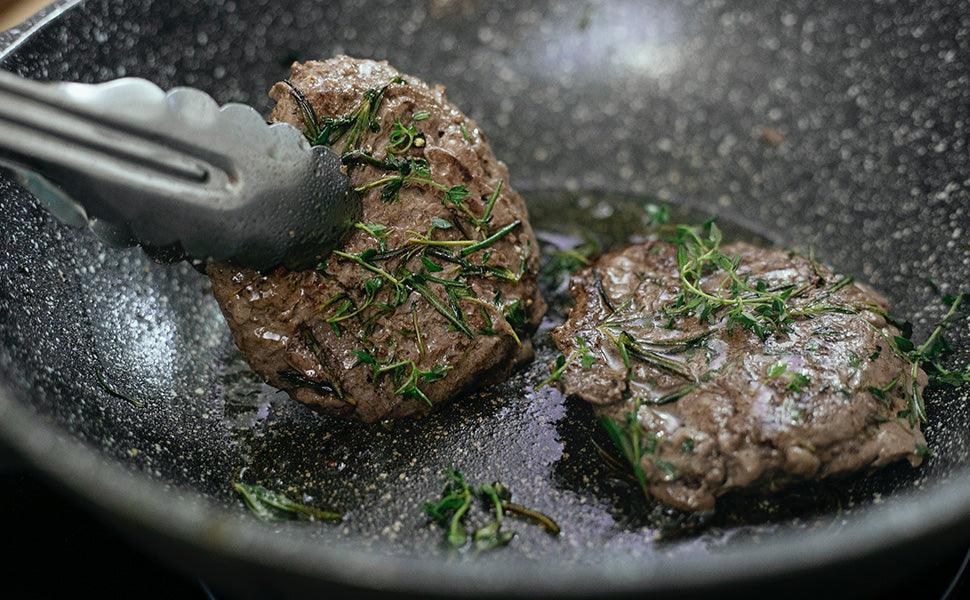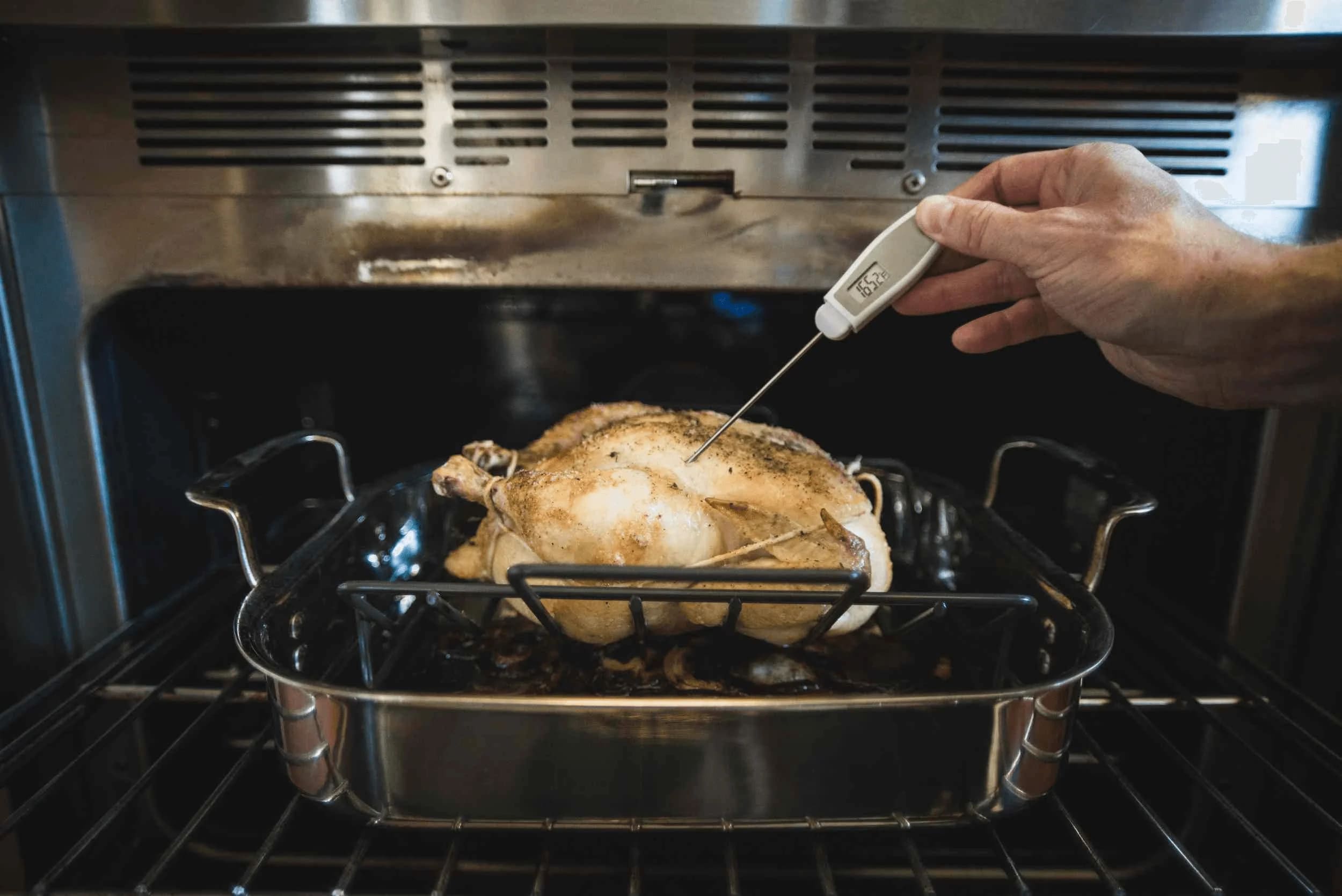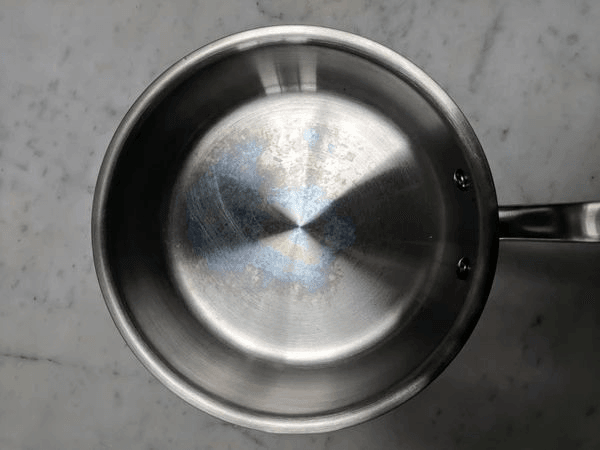TABLE OF CONTENTS
Non-stick cookware is known for superlative performance, versatility, and ease of maintenance. They feature a unique coating known as polytetrafluoroethylene (PTFE). This material offers no friction to anything that comes into contact with it. Some brands refer PTFE as Teflon.
Why is PTFE non-stick?
Polytetrafluoroethylene has exceptional physical and chemical properties. It features long chains of florin and carbon atoms. And because there are no cohesive forces, no foreign molecule can stick to it. In chemical terms, polytetrafluoroethylene is the equivalent of an introvert.
The history of PTFE dates back to 1938. Roy Plunkett discovered it after some chemicals went badly wrong in a refrigerator. However, until the 1940s, scientists realized that it was a low-friction surface. Today, the majority of frying pans in the US use a non-stick coating.
Are there concerns about non-stick PTFE coating?
While there have been concerns about the chemical effects of Teflon when heated above 500 degrees F, it is not harmful to humans. Even the particles of chipped pans do not cause any health problems.
According to the American Cancer Society, polytetrafluoroethylene doesn’t cause cancer. And it won’t react to chemicals inside the body. Initially, there were questions about eco-friendliness, but this problem has been addressed.
Here is the truth. When you heat non-stick surfaces above 300 degrees Celsius, Teflon releases polymer fumes that can escape through the windows. Once you’re exposed, you may experience mild symptoms like fever, headache, backache, chills, and body aches. If you plan to cook under high heat, you should save your Teflon and use a stainless steel pan instead.
Is PFOA an issue?
A major component of Teflon is perfluorooctanoic acid (PFOA). It ensures the coating material adheres to the body of the pan. Because it doesn’t break down, it can cause some ecological problems. Not to mention, this chemical is linked to some types of cancers.
All non-stick cookware manufactured after 2015 is PFOA free.
Are Teflon pans durable without PFOA?
There has been an ongoing debate on the durability of non-stick pans without PFOA. Generally, the durability of non-stick pans is determined by their thickness. Once polytetrafluoroethylene is sprayed, it affects the quality of the skillet. PFOA won’t affect durability.
PTFE vs. Other materials (ceramic and cast iron)
Both ceramic and cast ir on have been around for decades. They are heavy, but you can lift them without any assistance. The heat transfer rate is also not the best. Today, non-stick Teflon-coated pans have replaced these old favorites – for good reasons.
If you want to cook fast, cast iron and ceramic cookware cannot match the performance of Teflon pans.
You may have some cookware made of other materials, but a non-stick pan or pot will get the job done when you want to cook your eggs flawlessly. Of course, you won’t have to run to buy a new set every few months.
Here is the catch - many companies that manufacture skillets using polytetrafluoroethylene are now creating a line of ceramic and cast iron cookware. However, they need to be seasoned every few weeks. This explains why people are still embracing the benefits of non-stick surfaces.

What precautions should you take when using Teflon non-stick pans?
If you want your non-stick pans to deliver on their promise, you should take the following precautions.
Don’t overheat the cookware
If you heat your Teflon cookware above 450 degrees F, the high temperature could be harmful. That said, you should cook under medium heat, which is recommended for the stovetop.
Check for any damage
If the surface is flaking or chipping, it could be unsafe for use. If you ignore them, the minor scratches can get deeper.
Never leave an empty pan on fire
The polymers can easily be released if you leave your pan under intense heat. So, before you place the pan on the heat, you should make sure there’s some liquid or food in it.
Avoid utensils that won’t scratch the cookware
Instead of using stainless steel spoons, you can use wooden, plastic, or silicone cookware. When washing, avoid steel wool scrapers.
While today’s non-stick cookware is durable, you should never cut foods with a knife in non-stick pans.
Avoid self-cleaning ovens
As mentioned earlier, non-stick cookware can release polymers when used under intense heat. If you use an oven to clean your polytetrafluoroethylene cookware, you could release the fumes from the pan.
Never use non-stick spray
For many folks, this may sound counterintuitive. Although cooking sprays burn at a lower temperature, they can damage your pans. Not to mention, they create a residue that could ruin the non-stick surface.
This brings us to the question; should you use oil when cooking with non-stick pans? A little oil can help to conduct heat inside the pan. If you add some before the food, the oil can enhance the non-stick effects. Only use pure fats in their natural form.
Proper storage
The best way to store non-stick pans is by hanging them. If you must stack them together, make sure there are no sharp objects. You can also place a paper towel in between to separate them.
Plus, make sure you can access them without scratching the bottom.
Don’t store food in the pans
Non-stick pans are not meant to store food. This promotes degradation depending on what you store.

Cooking with non-stick PTFE cookware
Teflon skillets allow you to cook delicate foods like fish or eggs without sticking to the pan. One unique feature about the pans is that you don’t need to preheat them first. If you want to make scrambled eggs, you should heat the pan at 160 degrees F. Foods like bacon will attain a crispy texture at this temperature.
According to Teflon manufacturers, the recommended temperature for frying meat is 400-470 degrees F. However, some foods cook better than others.
Seafood
Cookware with non-stick properties cooks fish better. With the right amount of oil, you can mask the flavor.
Eggs
Non-stick pans give slippery protection, so you won’t lose your eggs.
A key benefit of stainless pans is that you use little fat. Also, they are easy to clean because the foods don’t stick to the surface. Teflon material can be used to coat a variety of metals like aluminium, copper, and stainless steel.
Foods that need flipping
If you plan to flip some foods like tortillas and frittatas, you’re better off with a non-stick skillet. Even when you cook at a low temperature, you don’t have to worry that you’ll bite raw food.
Any dish that does not require high heat such as eggs, stir-fried noodles, pancakes, fish fillets, and cheesy dishes will do better with a non-stick pan. Nothing prevents you from flipping, mixing, or tossing your pancakes.
What not to cook with non-stick cookware
A general rule of thumb is to avoid cooking foods that require more than 450 degrees F. Since the molecular structure of polytetrafluoroethylene material is unique, it’s difficult to sear meat. The non-stick will begin to disintegrate when exposed to heats above 500 degrees F. Again, these are not the best pans for cooking burgers that need searing. For steaks and burgers, you need a pan that you can preheat for a deep, dark sear.
If you like starting a dish on the stovetop and finishing in the oven, you may want to avoid a non-stick pan. Knowing the cookware to use for a specific dish is a skill you need to master.
How to tell it’s time to change your non-stick cookware
Any cooking enthusiast would agree that non-stick pans make frying easy and add aesthetics to your space. If you use your pans 3-4 times a week, they should last at least five years. So, which are the tale-tell signs that your pans need a replacement?
Discoloration
When you expose non-stick cookware to regular heat, it becomes discolored. While light discoloration is no big deal, the dark color could mean the non-stick surface is gone. At this point, the best approach is to replace the pan.
If you notice food sticks to the surface or you need more oil, the distinctive sheen could be gone.
Warping
If the pan's surface is uneven, this may affect the quality of food. Of course, your dishes won’t cook at even temperature. This is an alarming sign that you need to replace the pans.
Scratches
Pans made before 2013 feature PFOA material, which is known to be hazardous to our health. If you see too many scratches, then some chemicals could be flaking off. Today, cookware manufacturers no longer use the PFOA material. While the Teflon material won’t hurt you, it can make your food unattractive.

How to clean non-stick pans
If you want your skillets to last, you should take care of them. This makes cooking and cleanup easier. While you should always follow the manufacturer's instructions, there are some general tips to follow.
Many polytetrafluoroethylene pans are safe to use, so you can handwash them. If you expose them to temperatures in the dishwasher, you could ruin the non-stick surface.
Apart from that, you should avoid abrasive tools like scrubbing brushes and scouring pads. A soft sponge and soap are enough. If there are some stubborn stains, you can use a small amount of baking soda and water. Then, use a non-abrasive sponge to scrub gently until you get the desired results. Once you rinse and dry, you can re-season with some cooking oil.
If you’re still using the old non-stick pans, you may want to upgrade them.
How to buy non-stick cookware that is right for you
Choosing the best skillet is no easy feat with so many brands out there. Here is what you should look for.
Coating
With the advancement in technology, cookware manufacturers coat non-stick pans with different materials. Some use ceramic; others use Teflon. If you want cookware that does not pose any health danger, you should choose those with polytetrafluoroethylene coating. It also lasts longer than ceramic material.
Material
The base material matters too. Depending on your preferences, you can choose an aluminium or stainless steel pan. The latter is heavier and distributes heat evenly. One challenge with aluminium is that it heats up quickly, so it might not be the best for induction burners.
Price
While non-stick pans can be a turn-off for many due to the high price tag, they help you save money in the long term.
Finding a Good Nonstick Pan-imarku
More and more chefs are using Imarku non-stick cookware in their kitchens. They are safe, pocket-friendly, and feature quality craftsmanship.
Imarku 11-Piece non-stick stainless steel pots and pans
This cookware covers your cooking basics. It features a 12.6” wok pan, 8” frying pan, 8.15 qt stockpot, and a sauté pan with a lid. These pans and pots heat quickly and spread the heat evenly.
The most impressive feature of this cookware is that it comes with a non-stick coating for optimal cooking performance. It doesn’t alter the flavors and nothing sticks on the sides. Even better, the pans are free of PFOA, PFAS, cadmium, and lead, which are known to compromise the quality of food.
The cookware comes with a mirror stainless steel which makes cleaning a breeze. With simple maintenance, the set will stand the test of time.
Imarku 16-piece non-stick cookware set
It consists of an 11” frying pan, 9.5” frying pan, 5.54 qt stockpot with glass lid, 2.07 qt milk pot, 11” high frying pan with glass lid, and 11” square frying pan. You also get a pair of insulation gloves, an insulation pad, a silicone colander, a silicone leak shovel, and a silicon spoon.
The cook set is free of PFOS, PFOA, cadmium, and lead. It’s also compatible with ceramic, gas, induction, and electric stoves. Another remarkable feature is the high-temperature die casting. It guarantees quick and even cooking.
You can place a silicone spatula on top for better sealing with the personalised lead design. To ensure durability, you should cook your foods at medium-low heat.
Imarku 8-piece Non-stick cookware set diamond design
This cookware features various styles of pots, so you can enjoy cooking with your family and friends. It includes a 4.2qt saucepan, 5.5qt Casserole, 8” frying pan, 9.5” frying pan, 1.6 qt saucepan, and 3pcs of tampered glass lids.
The cookware heats up fast, thanks to the coated aluminium surface. Plus, the non-stick surface is pleasing to the eye. You’ll love the silicone touch handle grips.
Wrap up
Any professional chef can agree that you can’t make your favorite pancakes or omelet without a Teflon non-stick pan. It saves time for home cooks and never leaves the mess behind. You can now use the above skillets to the fullest. Trust us - you’ll see the difference.






















Leave a comment
All comments are moderated before being published.
This site is protected by hCaptcha and the hCaptcha Privacy Policy and Terms of Service apply.